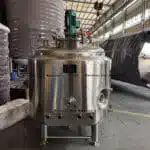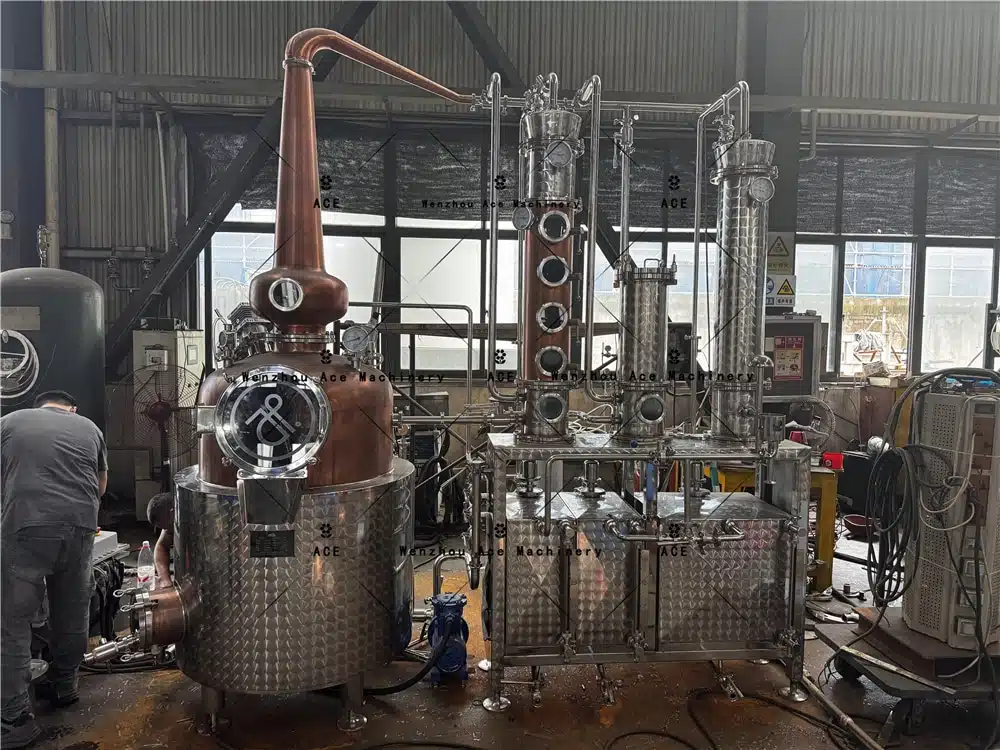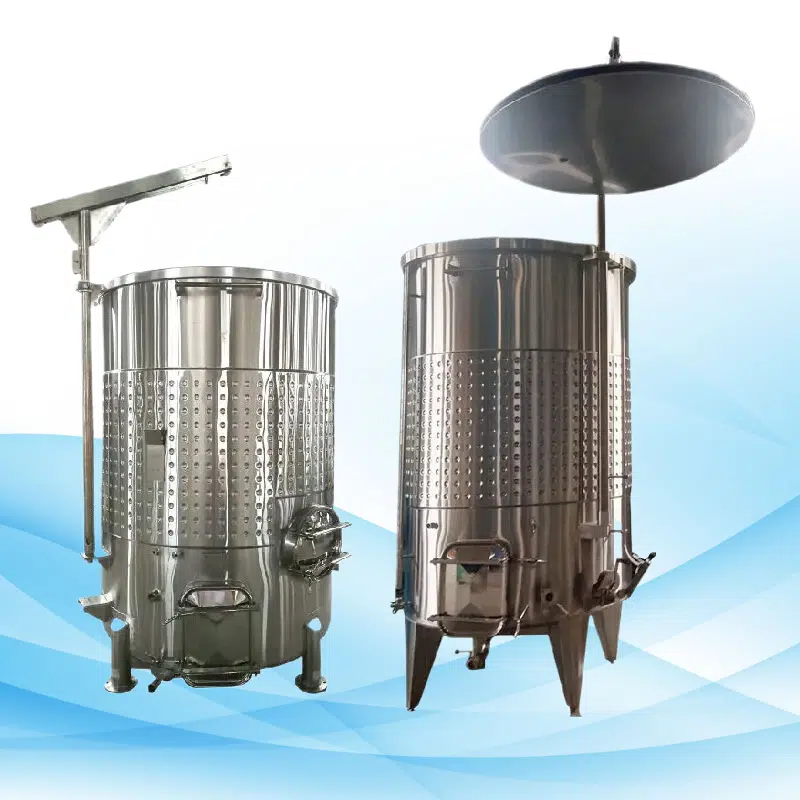In the world of brewing, equipment plays a crucial role.
The mash tun and lauter tun are two such pieces of equipment.
But what exactly are they?
Whether you are home brewing, running a craft brewery, or an enthusiast brewing enthusiast – this guide is here for you.
Understanding the Basics of Brewing
Here’s an introduction to its basics that should make things clear.
The two main stages we’ll focus on are mashing and lautering.
These stages involve the use of a mash tun and a lauter tun, respectively.
But before we delve into these pieces of equipment, let’s briefly outline the brewing process:
-
- Malting: Barley is soaked, germinated, and dried to convert starches into fermentable sugars.
- Mashing: The malted barley is mixed with hot water in a mash tun to extract the sugars.
- Lautering: The liquid (wort) is separated from the grain in a lauter tun.
- Boiling: The wort is boiled and hops are added for flavor and preservation.
- Fermentation: The wort is cooled and yeast is added to convert sugars into alcohol.
- Maturation: The beer is allowed to mature and develop its flavors.
- Filtration and Carbonation: The beer is filtered, carbonated, and prepared for packaging.
- Packaging: The beer is bottled, canned, or kegged for distribution.
Now let’s examine more closely the mash tun and lauter tun.
What is a Mash Tun?

A mash tun is a vessel used in the mashing stage of brewing.
In this stage, malted barley is mixed with hot water.
This process, known as mashing, converts the remaining starches in the malt into sugars.
These sugars will later be fermented by yeast to produce alcohol.
The design of a mash tun can vary, but common features include:
- A heating element to maintain the desired temperature.
- A mixer to ensure the malt and water are thoroughly combined.
- An insulated body to retain heat.
- A drain to allow the liquid (wort) to be transferred to the lauter tun.
What is a Lauter Tun?

A lauter tun is used in the lautering stage of brewing.
This is where the liquid wort is separated from the grain.
The goal is to extract as much of the sugar-rich wort as possible, while leaving behind the grain husks.
Key features of a lauter tun include:
- A false bottom with small perforations to allow the wort to pass through while retaining the grain.
- Rakes to help separate the wort from the grain.
- A sparge arm to sprinkle hot water over the grain bed, rinsing off any remaining sugars.
- A drain to collect the wort for the next stage of brewing.
The Mashing Process Explained
Mashing begins with the malted barley and hot water.
They’re mixed together in the mash tun.
This mixture, known as the mash, is then heated.
Heat activates enzymes in malt that convert starches to sugars.
This conversion process typically takes 1–2 hours.
Once complete, the liquid portion of the mash, now called the wort, is drained off and transferred to the lauter tun.
Comparing Mash Tun and Lauter Tun
While both the mash tun and lauter tun are integral to the brewing process, they serve distinct roles.
An effectively designed and operated mash tun is crucial to efficient brewing efficiency, as its proper functioning ensures starch conversion for maximum brewing efficiency.
An efficient lauter tun is vital to producing clear wort that meets quality beer production standards.
Understanding and optimizing both tuns’ operation can significantly enhance your brewing process.
Design Differences
The design of a mash tun and lauter tun is tailored to their specific roles.
A mash tun is designed to facilitate the mashing process.
It often features a heating element and a mixer to maintain and distribute heat.
On the other hand, a lauter tun is designed for lautering.
It features a false bottom and rakes to facilitate wort separation and prevent grain bed compaction.
Functional Differences
The mash tun and lauter tun also differ in their functions.
The mash tun is where the starches in the malted barley are converted into sugars.
This is achieved through the mashing process, which involves mixing the grains with hot water.
The lauter tun, on the other hand, is where the liquid wort is separated from the solid grain bed.
This is achieved through the lautering process, which involves draining, recirculating, and sparging the wort.
Combined Mash/Lauter Vessels
In some brewing systems, the mash tun and lauter tun are combined into a single vessel.
This is known as a mash/lauter tun.
However, it may not offer the same level of control and efficiency as separate vessels.
Therefore, the choice between separate or combined vessels depends on your specific brewing needs and constraints.
Considerations for Homebrewers vs. Commercial Breweries
The choice of brewing equipment can vary greatly between homebrewers and commercial breweries.
Homebrewers often operate on a smaller scale and may prefer simpler, more affordable equipment.
A combined mash/lauter tun, for example, may be a practical choice for homebrewing.
On the other hand, commercial breweries often require larger, more specialized equipment to meet their higher production demands and quality standards.
Technological Advancements and Automation
Technological advancements have greatly improved brewing equipment in recent years.
Modern mash tuns and lauter tuns often feature digital controls and automation for precise temperature and process control.
But this option requires an initial investment that may involve higher initial costs and may have a steeper learning curve.
Maintenance and Cleaning
Maintenance and cleaning are crucial for the longevity and performance of your brewing equipment.
Both mash tuns and lauter tuns require regular cleaning to prevent buildup and contamination.
However, their cleaning protocols can differ due to their different designs and functions.
















